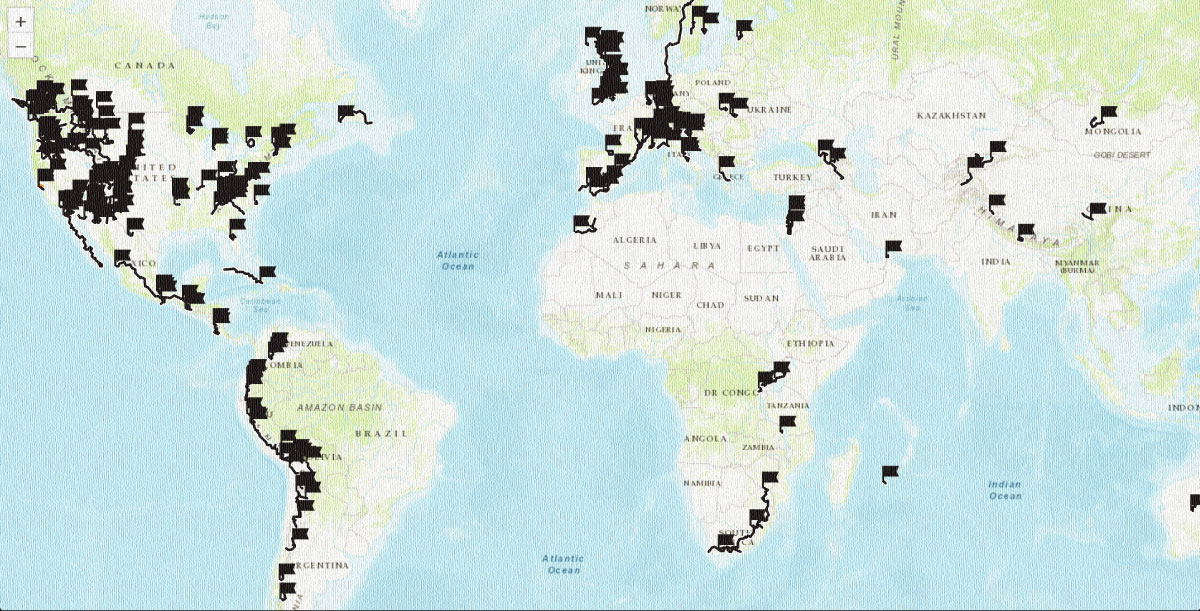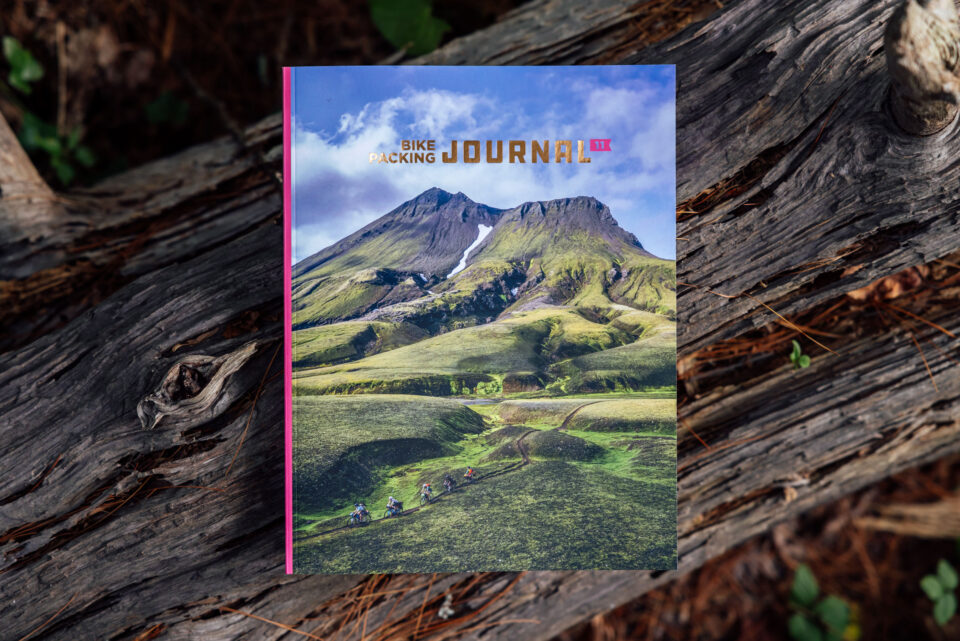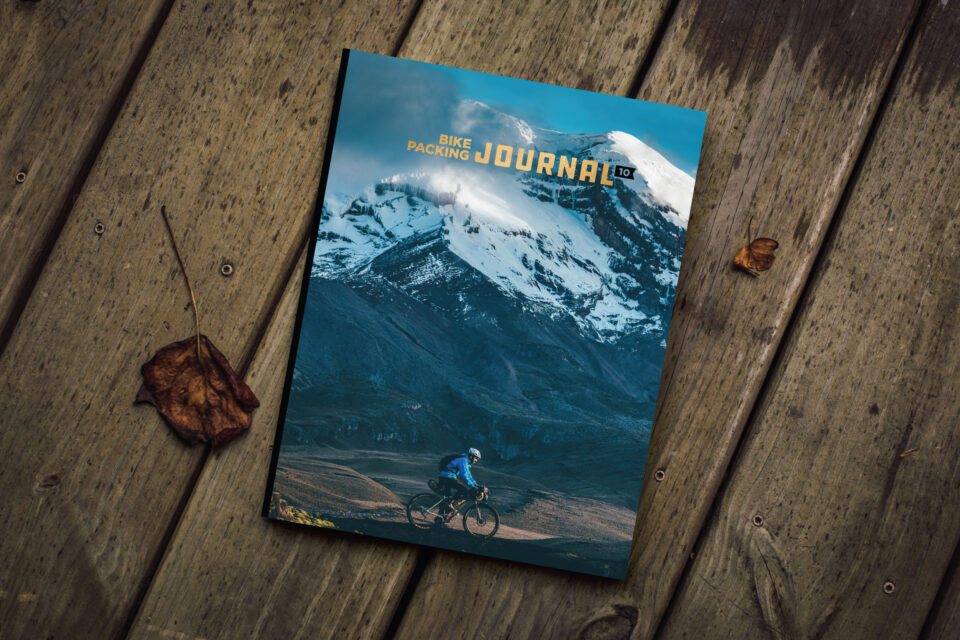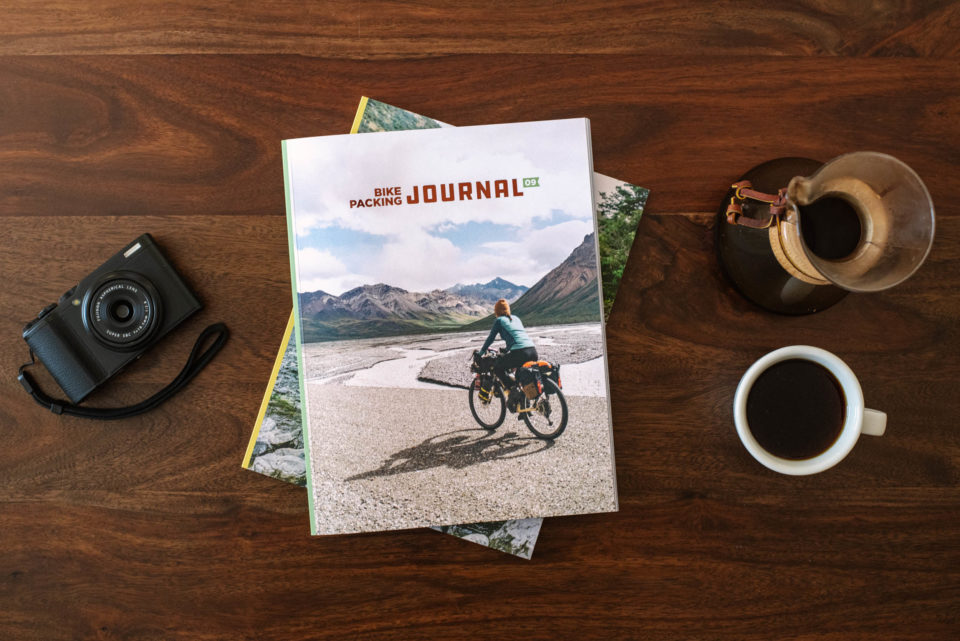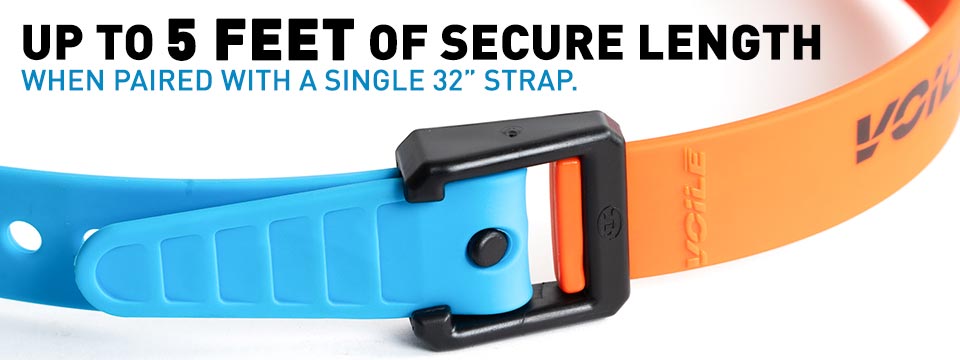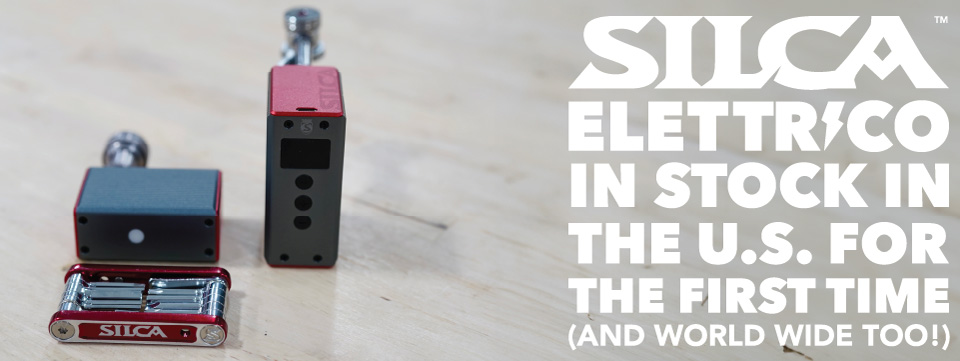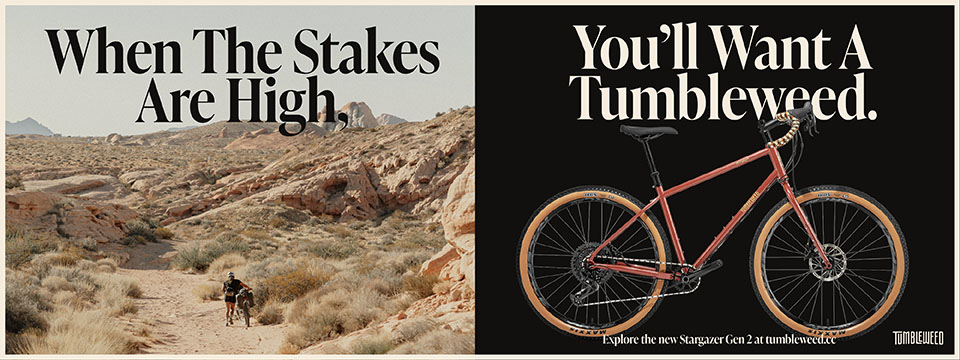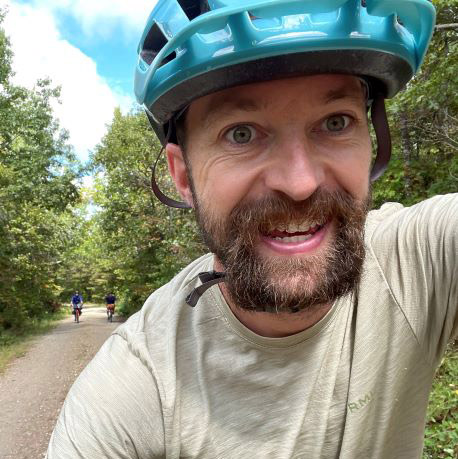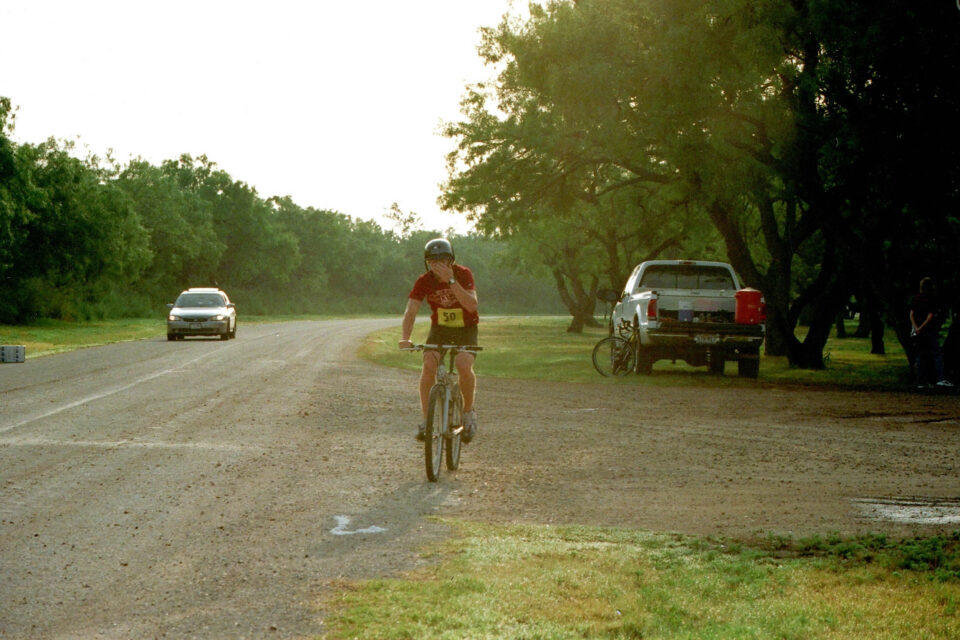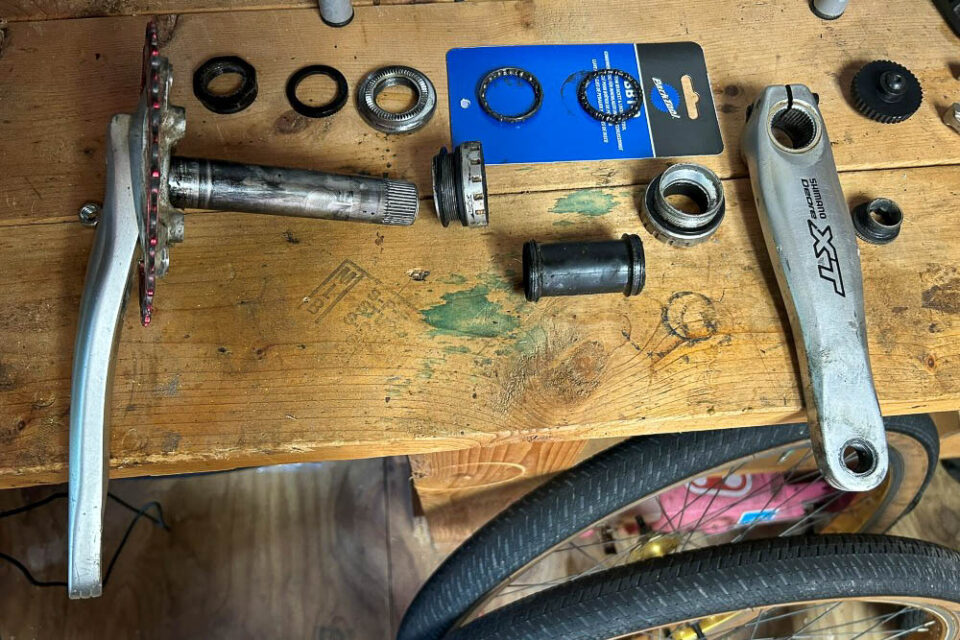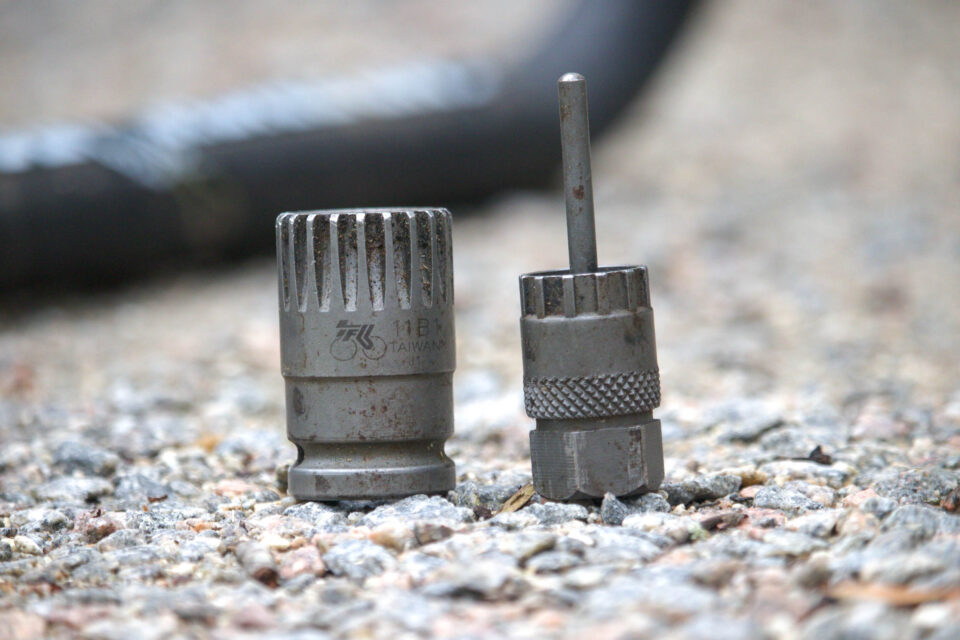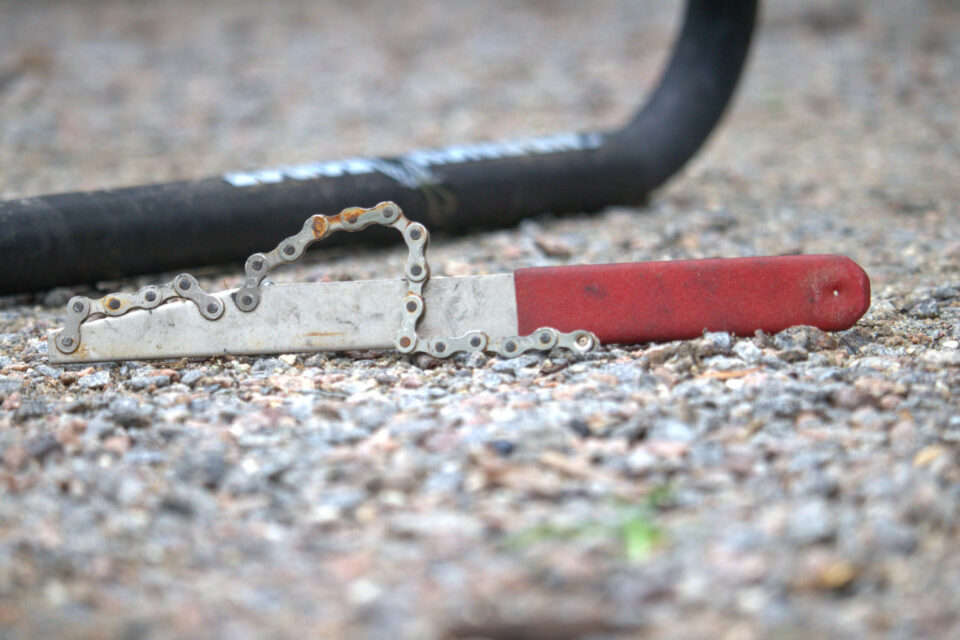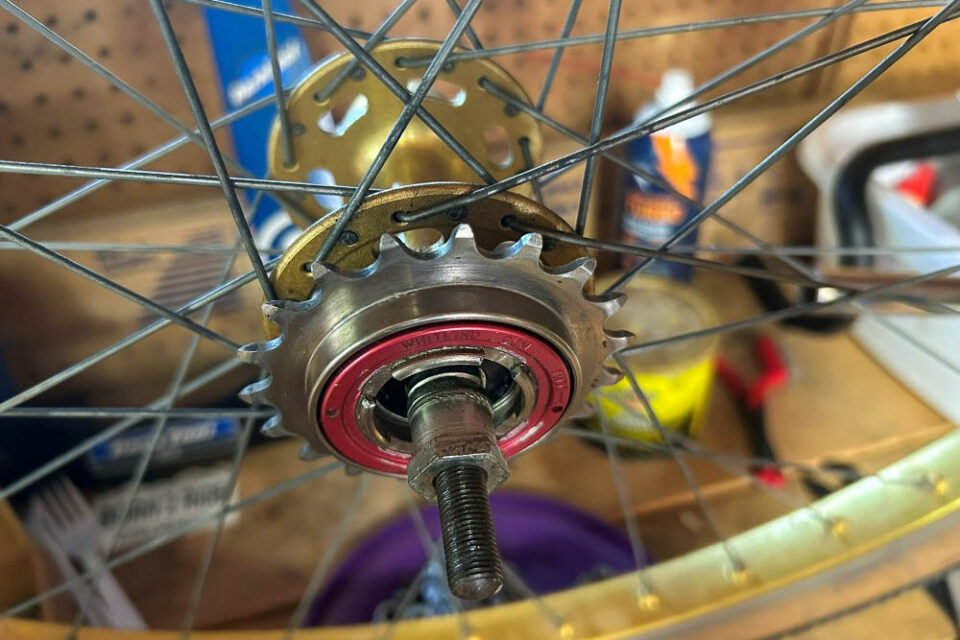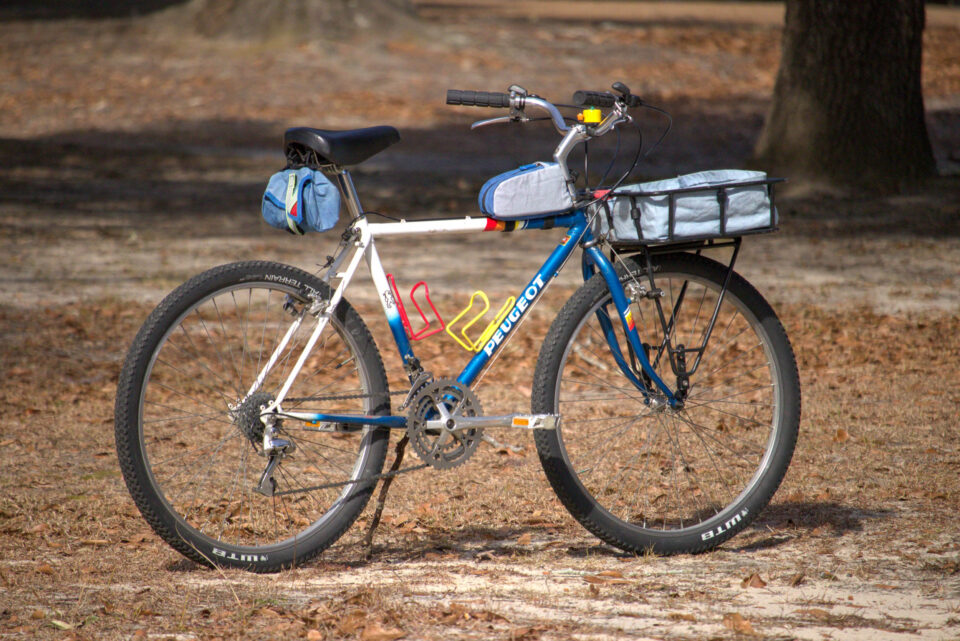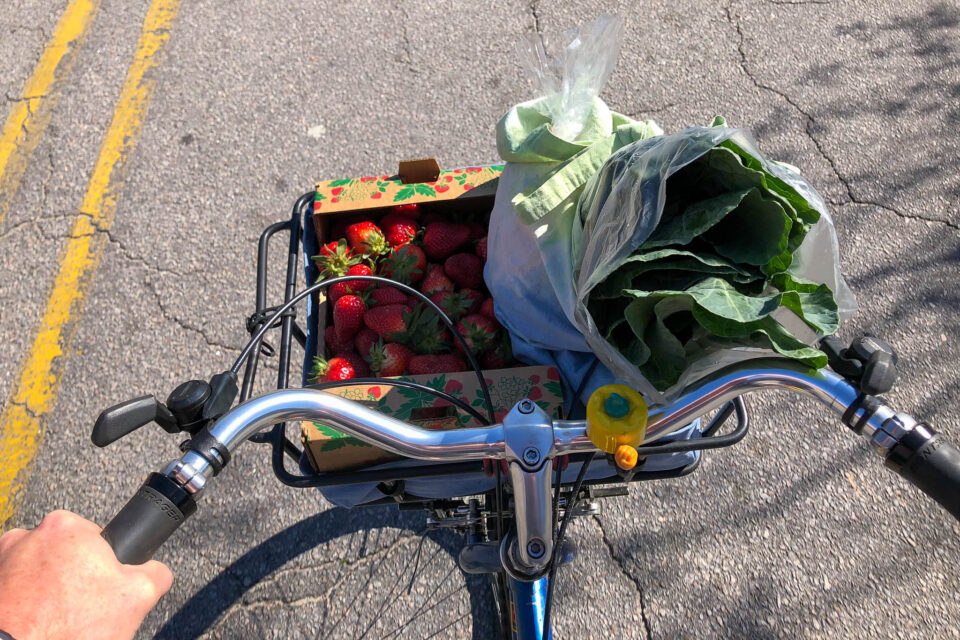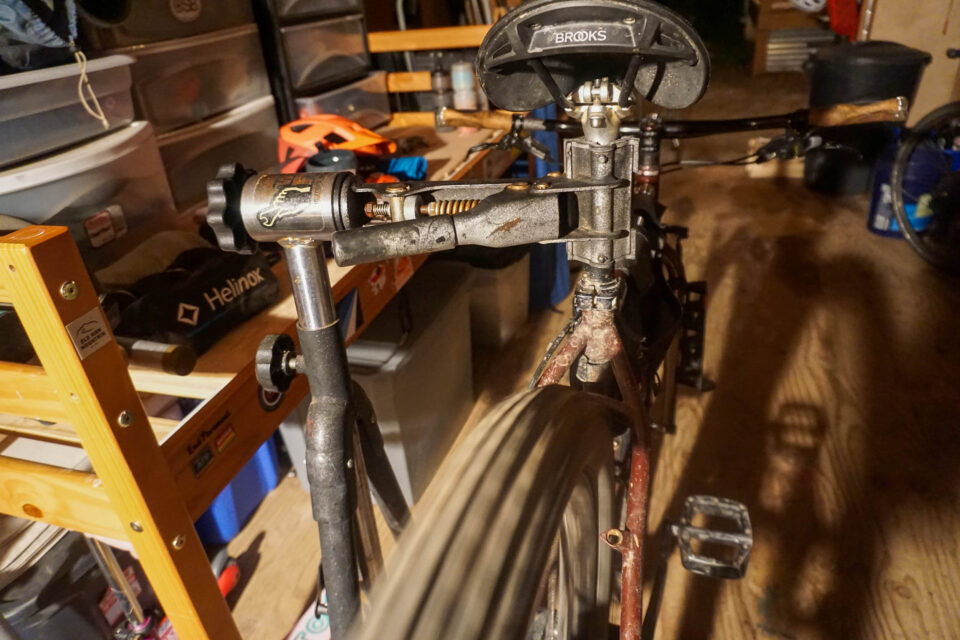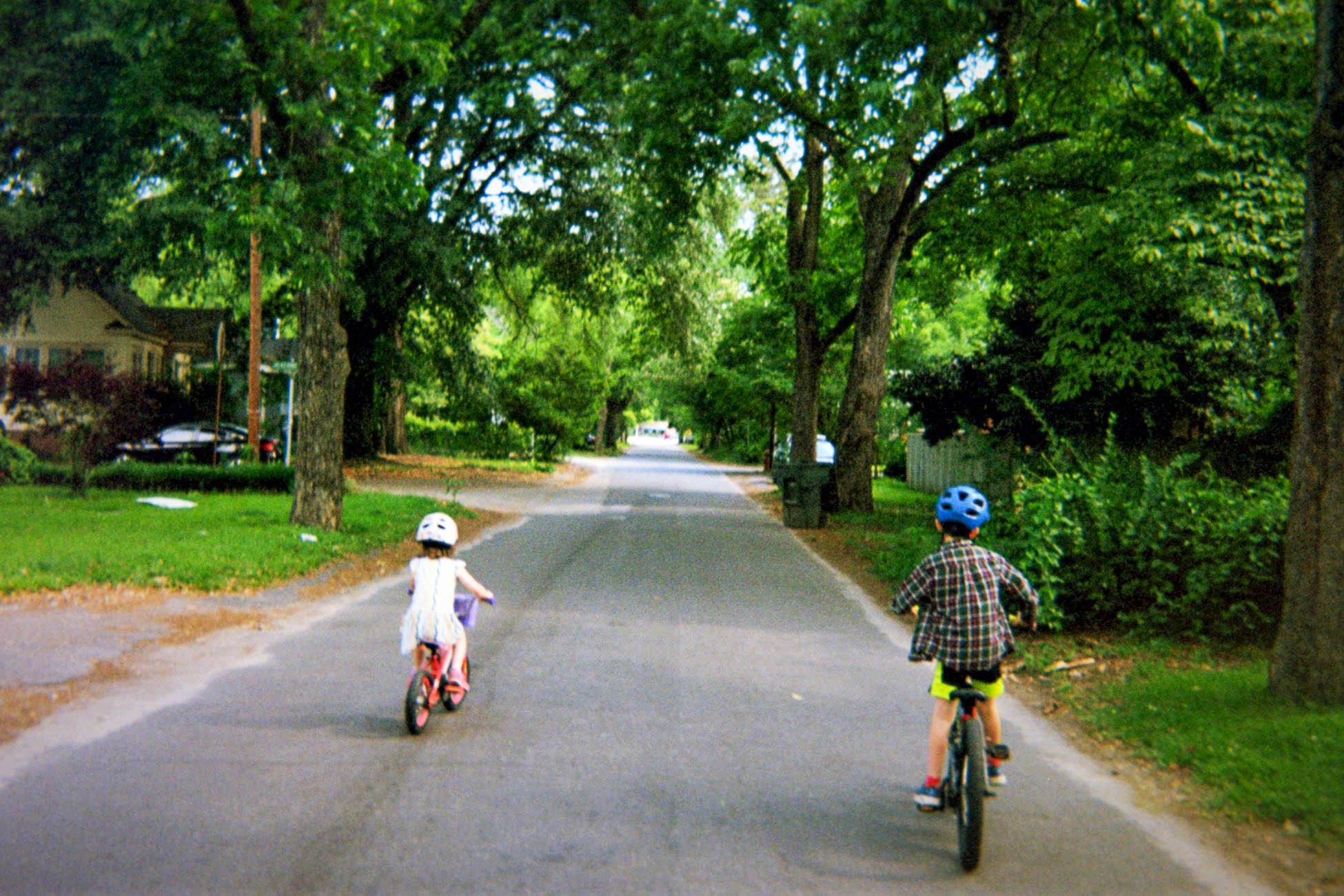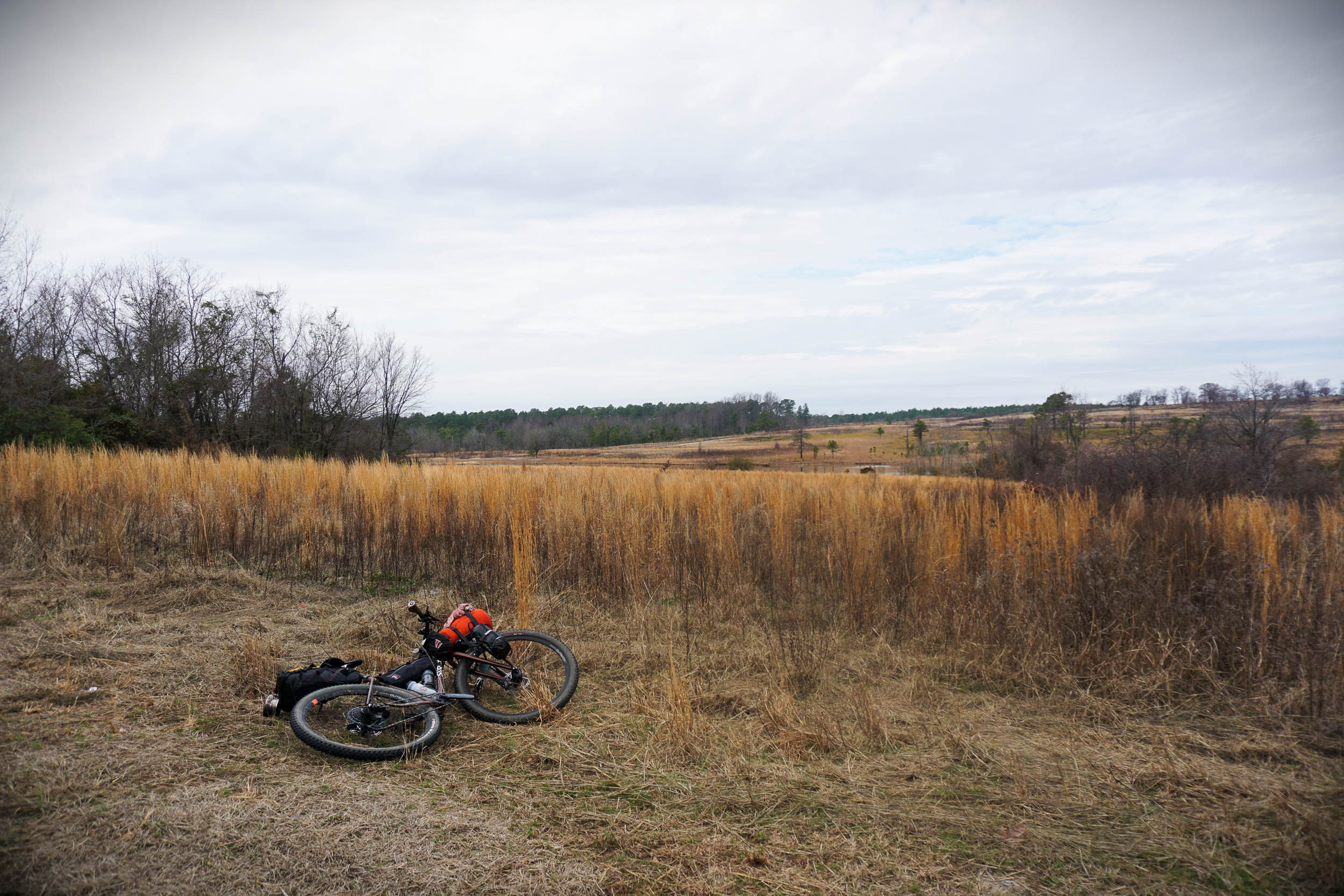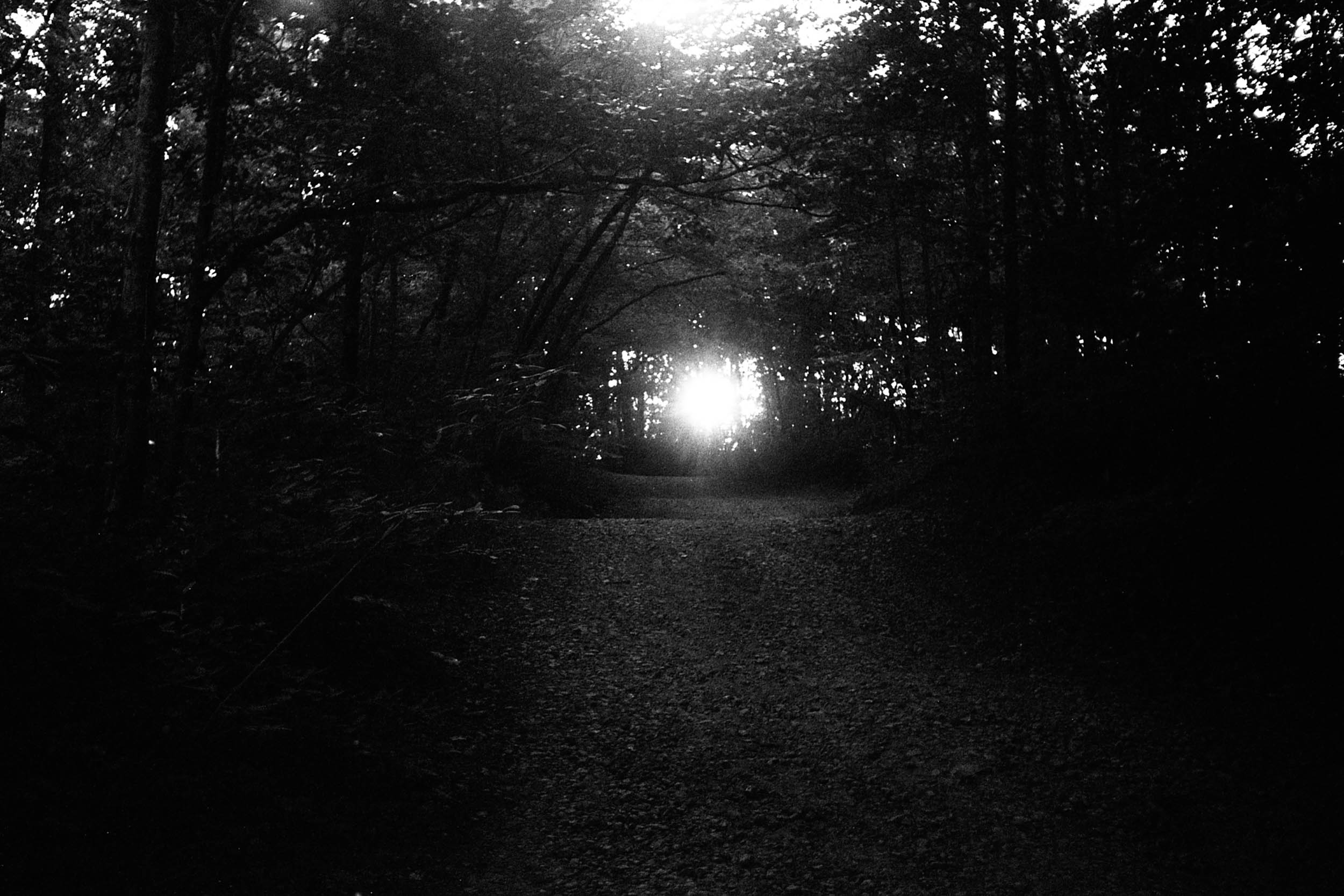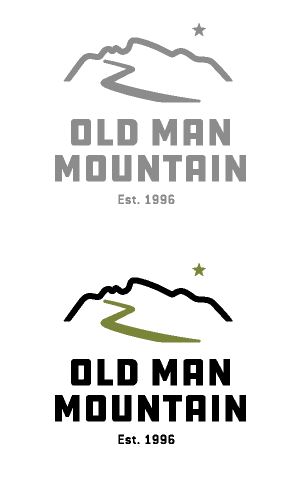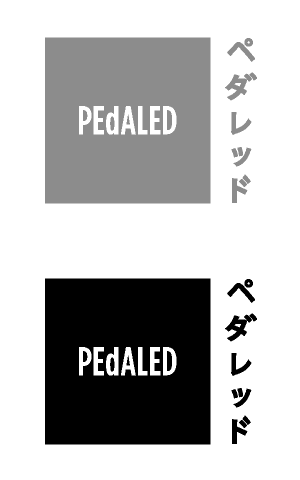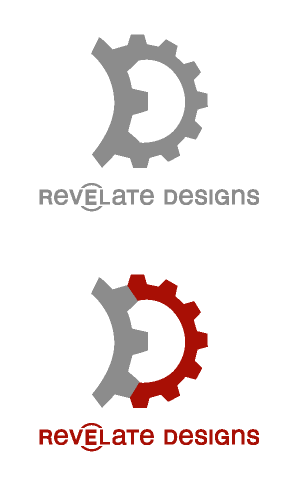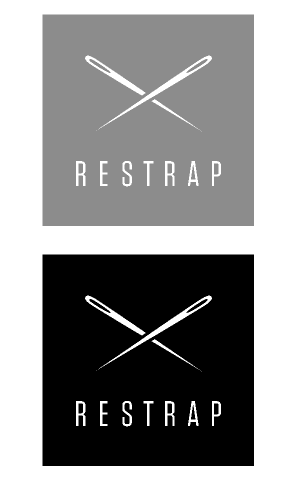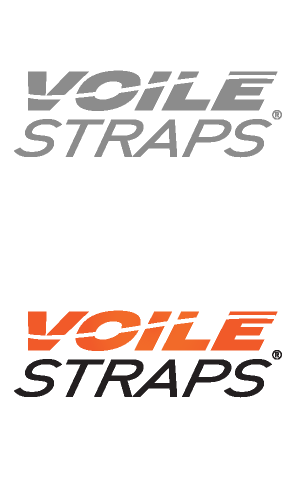The Stand: An Origin Story
In “The Stand,” Tanner Arrington explores the concept of origin stories and delves deep into the saga of how receiving a basic repair stand as a teenager ignited a lifelong love of bicycles and altered his way of engaging with the world. Read his fascinating tale of appreciation, passion, and connection here…
PUBLISHED Jul 28, 2025
One of my favorite parts of any bike story, large or small—a rider profile, a Reader’s Rig, a shop visit—is the inevitable origin story. There is usually some space dedicated to a person’s history, some recalling of the events that led them to the point where bikes became a crucial part of their lives. This part of the story sets the stage, bringing context and dimension to the rest. It works because stories need a trajectory, and it provides a starting point.
But I think there’s something deeper in origin stories. We see them all over the place, from comics to video games to religions and disparate cultures around the globe. Beyond providing a simple backdrop, they bring purpose. They remind us that our past experiences, good, bad, and complicated, have led to something meaningful. In our case, that’s bicycles. For some reason, through these events, and despite others—and with the help of these people—I formed this relationship to bicycles that is an essential part of my life.
When I read a story about bikes, I find myself looking for these origin stories. Sometimes they are short and simple; that great ubiquitous feeling of freedom we have as kids on bikes is a common one, and it’s a wonderful testament to the power of a bicycle in our lives. Sometimes they are the story. I think of the moving accounts of riders who have found some kind of healing on two human-powered wheels. And there are the business owners who, despite constantly shifting economic sands, are compelled by some deep experience to keep bicycles moving forward.
Recently, I started thinking about my bicycle origins. Bicycles are at the very top of the list of important non-living things in my life. I can’t imagine life without them. On the rare days that I don’t ride one (even if just the half-mile to my kids’ school in the morning), there’s a good chance I’ll walk into my shop and stand there for a minute looking at them. It’s weird. Where did this all start? What events and people led to this? At the risk of boring strangers with my personal history, I hope this can serve as encouragement to explore your own origin story related to bicycles (or anything else, for that matter).
Like many in the BIKEPACKING.com community, bicycles were a significant object in my childhood. All the usual emotions of childhood bicycling freedom apply. There was the riding down to “the trails,” an abandoned lot in the corner of our neighborhood I often rode to with older neighbor kids. There were rides to the corner store for a soda. There was building ramps and watching kids get hurt (I have never been too excited to have my wheels off the ground). There was riding to school and finding out that the first time I made the ride by myself, my mom was actually following me a few blocks back because she was nervous.

These are vivid memories, as embedded as any from my childhood. Beyond the neighborhood, my parents would usually bring bikes for my sister and me when we went on camping trips. We rode miles of state park roads and trails near my hometown in Texas. We were riding our whatever bikes over whatever terrain. We were kids, and there were no labels. Just riding bikes wherever we wanted to go.
There is one story in my family that gets a lot of attention. I’ll admit it’s not so much a bike riding story as it is a falling off a bike story. My sister and I were camping with our dad at a state park. I think Dad was setting up camp, and my sister and I were cruising around on our bikes doing “tricks,” such as riding with no hands or standing on the top tube. My sister went for the win and tried to stand on her seat with no hands. The result was a helmetless head hitting the road, lots of blood, and an abandoned camping trip. Thankfully, she was fine, and just as thankfully, we still had bikes in our lives for the rest of childhood.
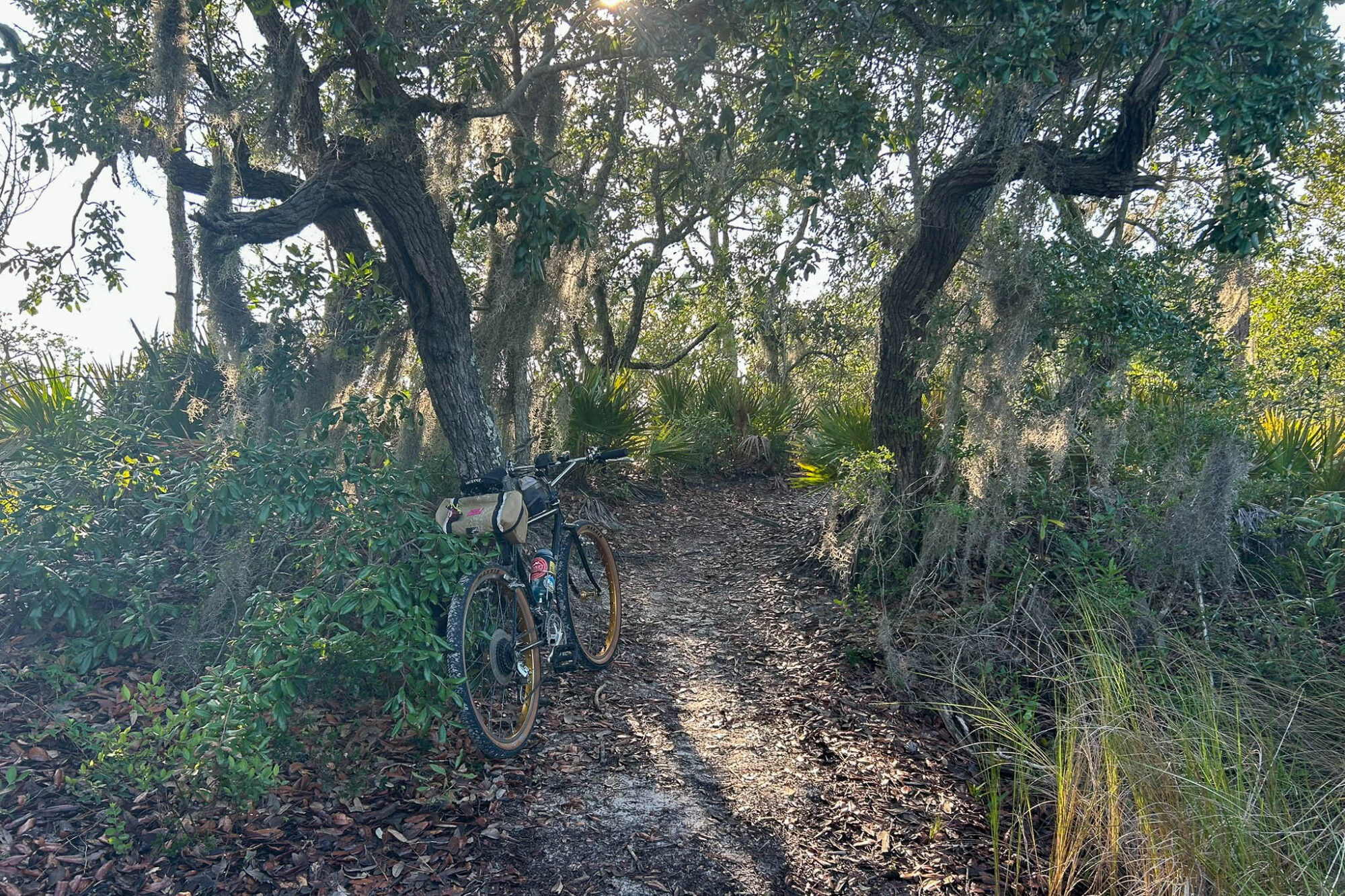
The other day, I was talking with my grandfather. Growing up, my extended family did a big annual camping trip to Arizona. It was an annual reunion, full of campfires, big meals cooked outdoors, and trout fishing. My grandfather reminded me of the times we brought my bike. I was probably 12 or so, and I apparently would disappear for a while, cruising the forest roads around the lake where we camped. Even then, I remember looking down those dirt roads, winding through ponderosa pine and douglas fir, and desiring to just keep going.
Childhood turns to adolescence, and things get strange. We often see the bicycle left behind with childhood while the exploratory teen years unfold. I got into skating, but I sucked at it because, as mentioned, I never cared for getting wheels off the ground. I liked the culture and the music. And I was involved in other things. But the bicycle never really disappeared. All those memories were embedded, barbs out, and were not letting go. Then something happened that, without exaggeration, changed my life.
One Christmas, when I was a teenager, my parents gifted me a bicycle repair stand, a basic set of bicycle repair tools, and a bicycle repair book (from here on out, I’ll refer to that repair stand and the tools as “The Stand”). What’s odd about this is that I can’t remember why I asked for them. I must have told them I wanted it, but I can’t for the life of me remember what led me to it, at least in any chronologically accurate way.
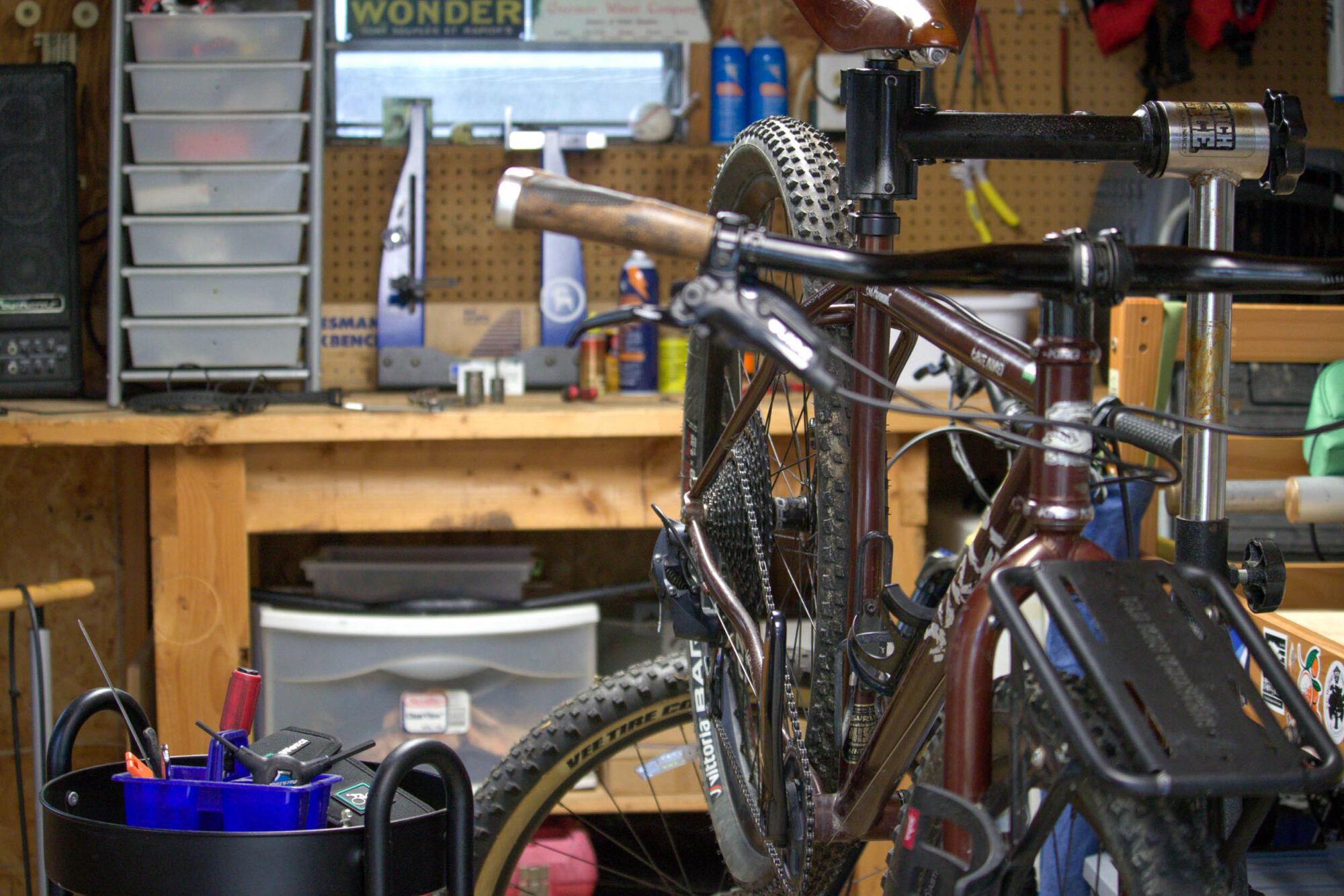
A friend of mine had older siblings, which I think was one catalyst to our interest in bikes. We studied maps (this is way before smartphones, y’all), and started planning routes into the countryside from our homes, cruising backroads where there were more cattle than people. We rode our bikes to high school a couple of times, which, in our West Texas town, was as common as riding a camel to school. Was The Stand before or after this time? I don’t know.
I knew a college guy who worked at the bike shop. I thought he was very cool. What influence did he have? At one time, my buddy told me about 29ers. They were changing the mountain biking world! Where did he learn that?
At one point, I decided I wanted to convert my dad’s old GT into a single speed. Where in the world had I heard about converting a bicycle to single speed? Was I cruising bike forums and reading bicycle websites via dial-up? Of course, at some point, I learned about Sheldon Brown and his website. Did that drive my desire for The Stand, or did I find that precious resource afterward?
The interesting thing about origin stories is that they are stories of something taking shape, but not step-by-step chronological guides to the process. They are a bit mysterious, as is anything that’s meaningful. That’s what this exercise is all about—exploring all these details in a way that’s less like a MapQuest printout of directions and more like looking over a topo map and trying to locate myself. I am where I am, and who I am, in relationship to the rest of the landscape.
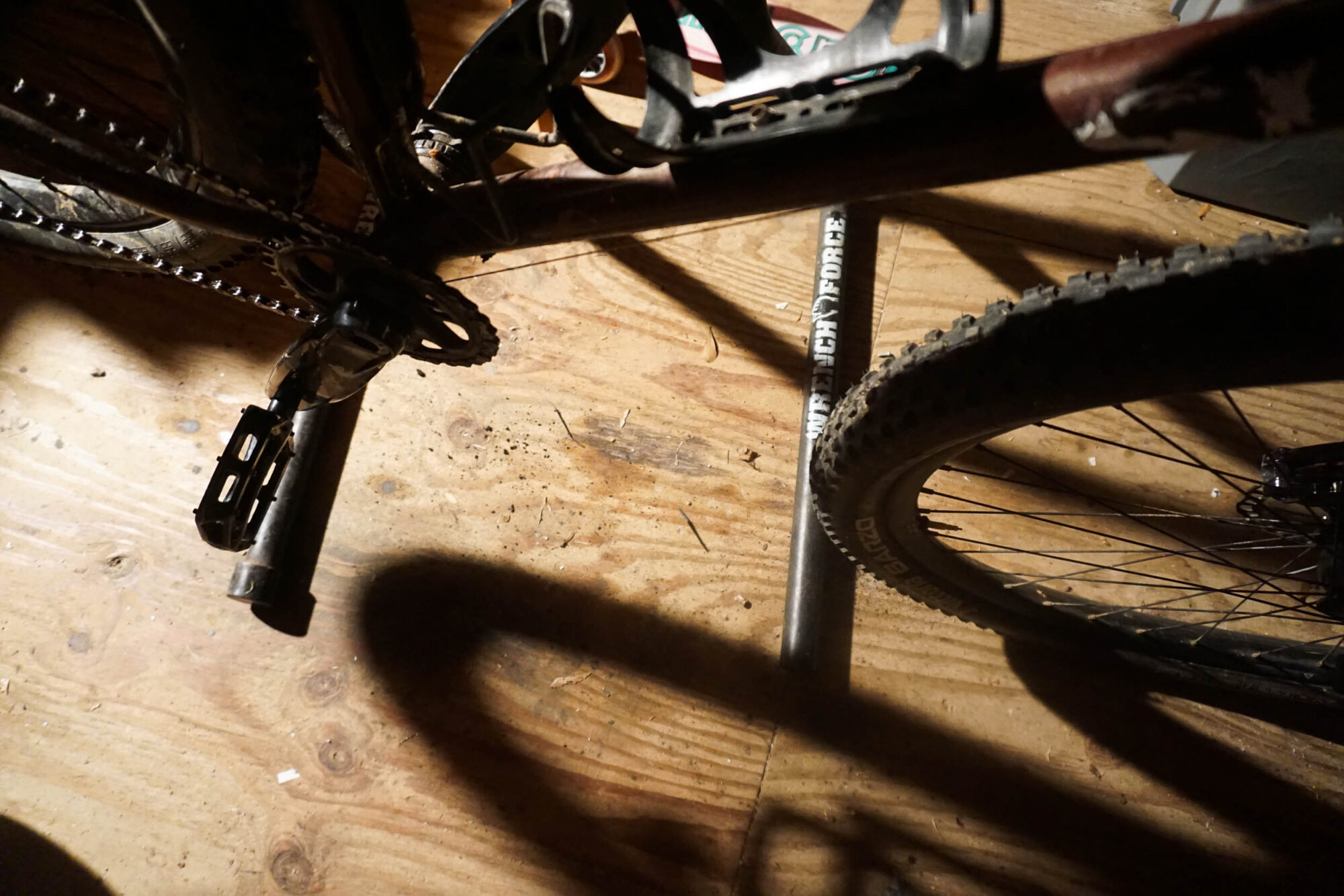
Sometimes, among the swirling, mysterious events, there is a focal point—a sharp pinnacle that stands out like a beacon. It is a waypoint, a place on the map of life that the rest of the story hinges on. In this story, it is The Stand. All the other pieces of the story converge there. All my early interest in bicycles ran like creeks and streams and rivers, converging one after another, until they arrive at that crucial confluence.
After 20 years, I still have The Stand. It’s the only repair stand I’ve had. It’s heavy and bulky, and due to some stints outdoors in college, has some rust, but it works for me. It has held every bike I have bought, numerous friends’ bikes, and a handful of strangers’ bikes too.
My current connection to bicycles is as much a product of The Stand as anything else. With it, the tools, and the book, I came to know bicycles deeply. That is not to say that I possess professional knowledge of bicycles as a bike mechanic—all those standards, quirks, component groups, and metrics. In fact, I know less of those things than many who comment on this website. What I mean is, with my own bikes, I know them. I know all their quirks, because I’ve taken them apart and put them back together again. I know what I love about them and I know their limitations.
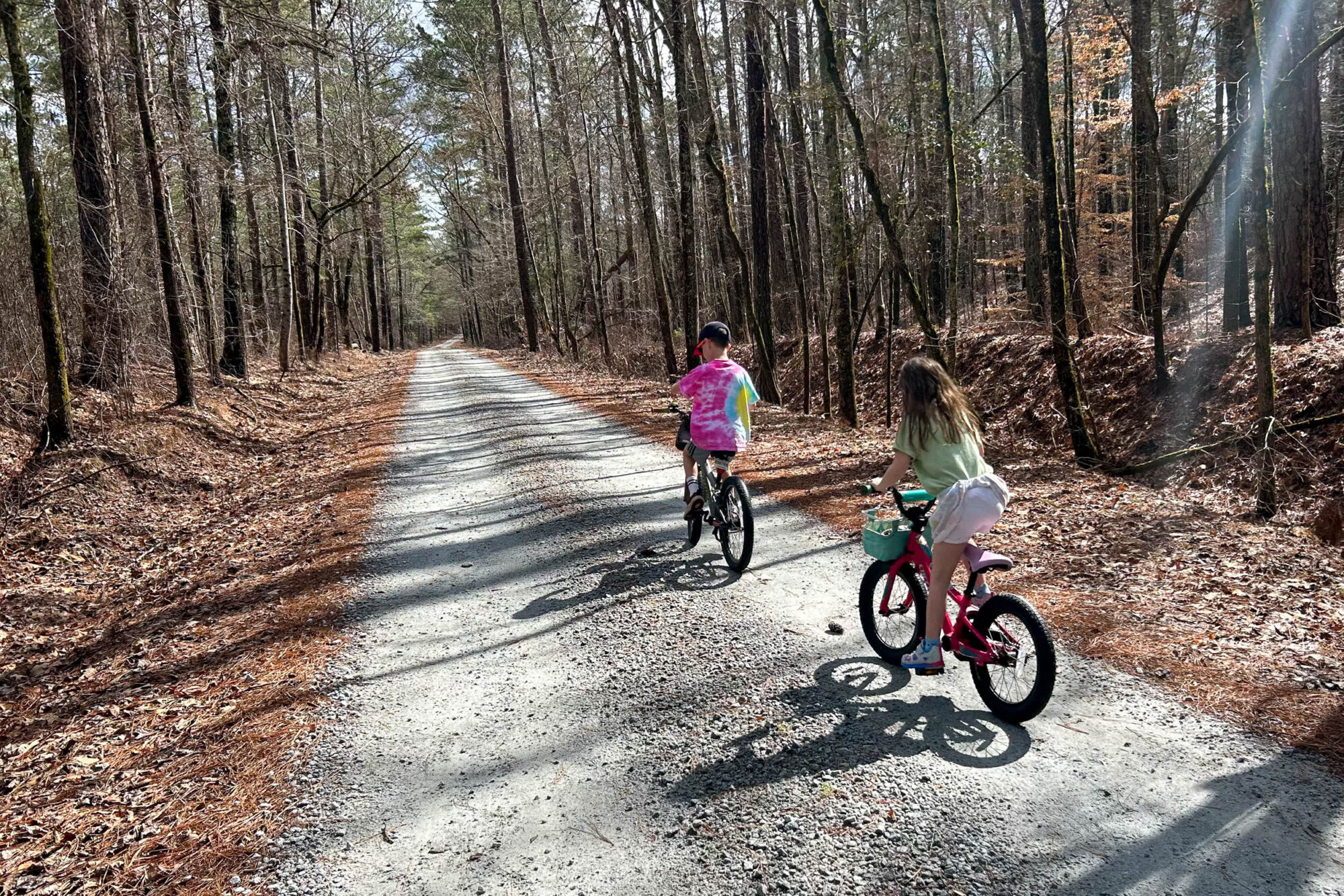
On a more fundamental level, I am intimate with the idea of a bicycle. I know what it takes to make the concept of a bicycle into a mechanical reality. I know how the rubber meets the road, the chain meets the ring, the bearings meet the cup. The freedom offered by a bicycle is bound to these most basic, though no less profound, mechanical dependencies. I will never be a cyclist, a rider of bicycles, or an owner of bikes. I will always be a lover of bicycles.
I must pause here to thank my parents directly for this gift and the joy it has brought me over the years. They couldn’t have known then what the gift would lead to, but they can see it now. I hope they know how grateful I am for it. If the stories leading to The Stand are the confluences that converge to the mouth of a great river, the rest of the story is the ocean, recirculating the water in new, essential ways.
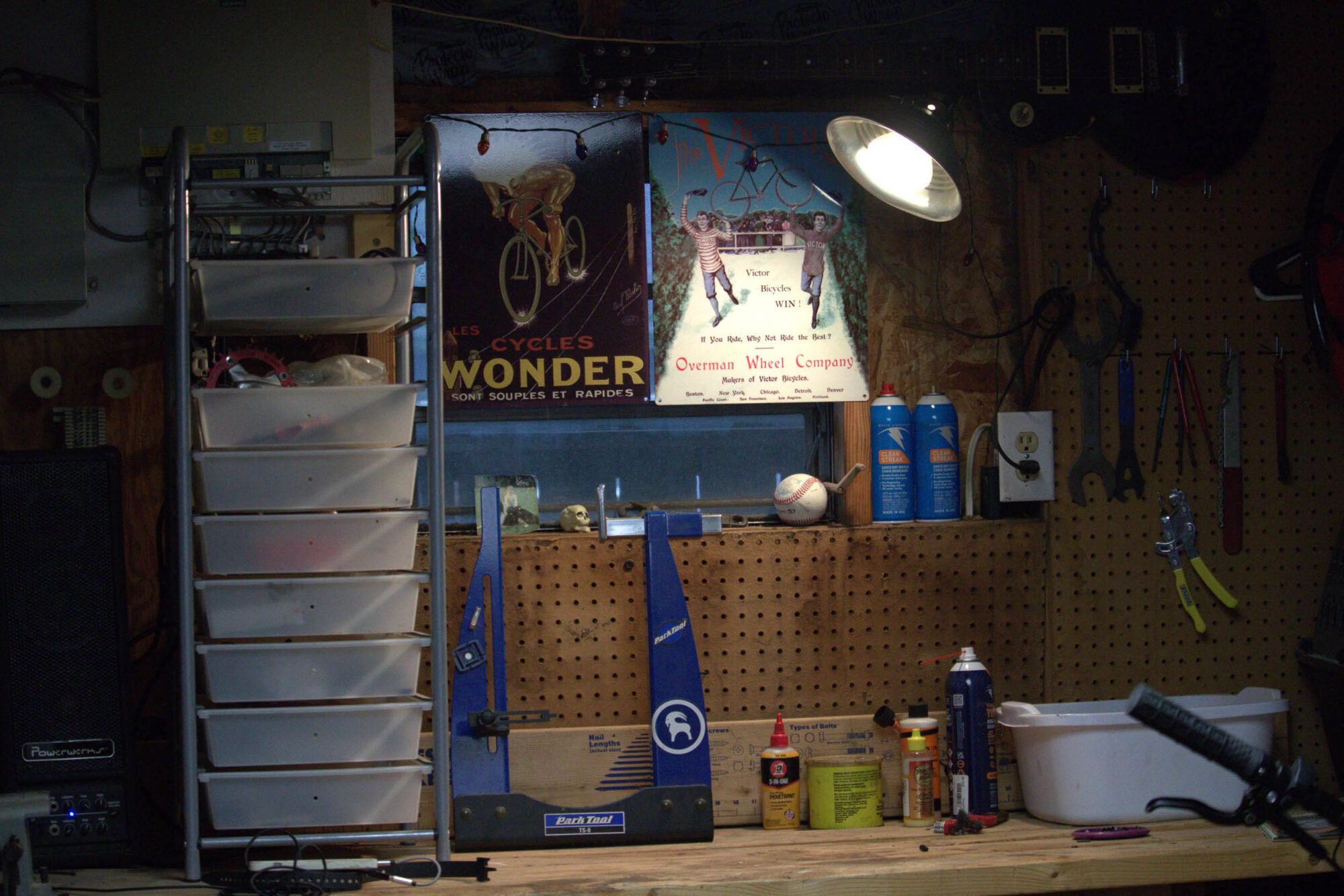
I did end up converting that GT mountain bike into a single speed when I was in college, though I couldn’t find a picture of it for this piece. I sold a road bike to cover the cost of the conversion kit. I even put a suspension fork on it. I rode it all over central Texas. On weekends in fall, when everyone gathered downtown for football games, I got out of town with the old GT, riding new trails and tasting new BBQ.
At this same time, the fixie craze was taking over the hipster world, and I was all about it. I had an old Peugeot road frame “converted” to a fixie, and I rode it everywhere around Austin: to school, to work, and for fun. I learned how to ride an urban landscape, how to put together a good route from A to B. It felt incredible. All the while, I knew I could keep my bikes rolling with The Stand and my tools.
I also started helping other people keep their bikes rolling. My roommates got bikes, and we learned together. I put an ad on Craigslist, offering to help with basic repairs for a six-pack of beer. Surprisingly, I got responses. Students showed up at my door with bikes that needed a wheel trued (with a wobbly homemade truing stand), a brake adjusted, or a rusted-out chain replaced. I got to share a beer with strangers and get their bikes working again—at least well enough. The best part about it was that they weren’t “bike nerds” trying to be impressive. They were just kids like me who needed a bike to get from one place to another, and we did it together.
I could go on and on with these little anecdotes, which would make this article long and tedious, but those mentioned are the beginning of my world built around bicycles. My life circumstances have changed, but the presence of a bicycle remains the same. The Stand is central to it all, the axis around which all of it is fixed. It now holds my children’s bikes, my wife’s bike, and my friends’ bikes. I get to keep learning, tinkering, and of course, riding.
On Riding Old Bikes
Compared to many who share my love for bikes, I have owned relatively few of them. The reasons for that are mostly related to my personality. I won’t go into all those traits, which are double-edged swords (thrift, practicality, stubbornness). What this has led to is a fleet of old steel bikes. My newest bike is a 2006-ish Surly Karate Monkey, which I’ve had for more than a decade. My most ridden bike is the 1997 Bianchi Volpe. The other two bikes currently in my shop are from the 80s. I have never bought a new bike, besides a BMX I bought during COVID for the pump track down the road from my house (I finally learned to get my wheels off the ground, at least a little!).
I don’t want to take a moral position about it. It’s just where I landed. There are some things that I love about owning old bikes. Or, you could say, things I find insightful. Take them as you will.

First, old bikes still work. I’m hardly the first to make this point, but there are not many items in my life that I use regularly, work well, and are older than I am. Looking around my house as I write this, I see old furniture, but it has the benefit of not being mechanical. You can’t really “innovate” a chest of drawers too much. But bikes! Despite all that has changed—new standards, new technology, new means of higher performance—they’re mostly the same. I love that. My Bianchi still carries me over 1,000 miles a year. It takes me around town and into the country and on roads and trails it’s not really designed for. It’s a blast.
Now, that doesn’t mean that these old bikes can do everything new bikes can. Is there a 40-year-old bike you’d trust on today’s downhill courses? Probably not. Do I sometimes wish I had a newer bike for some kinds of riding? Sure. I have plans to find a modern steel hardtail when I have time to ride more singletrack again. Yet for the riding I’m doing now, which is primarily using bikes in as many places in my life as I can, these old bikes get it done.
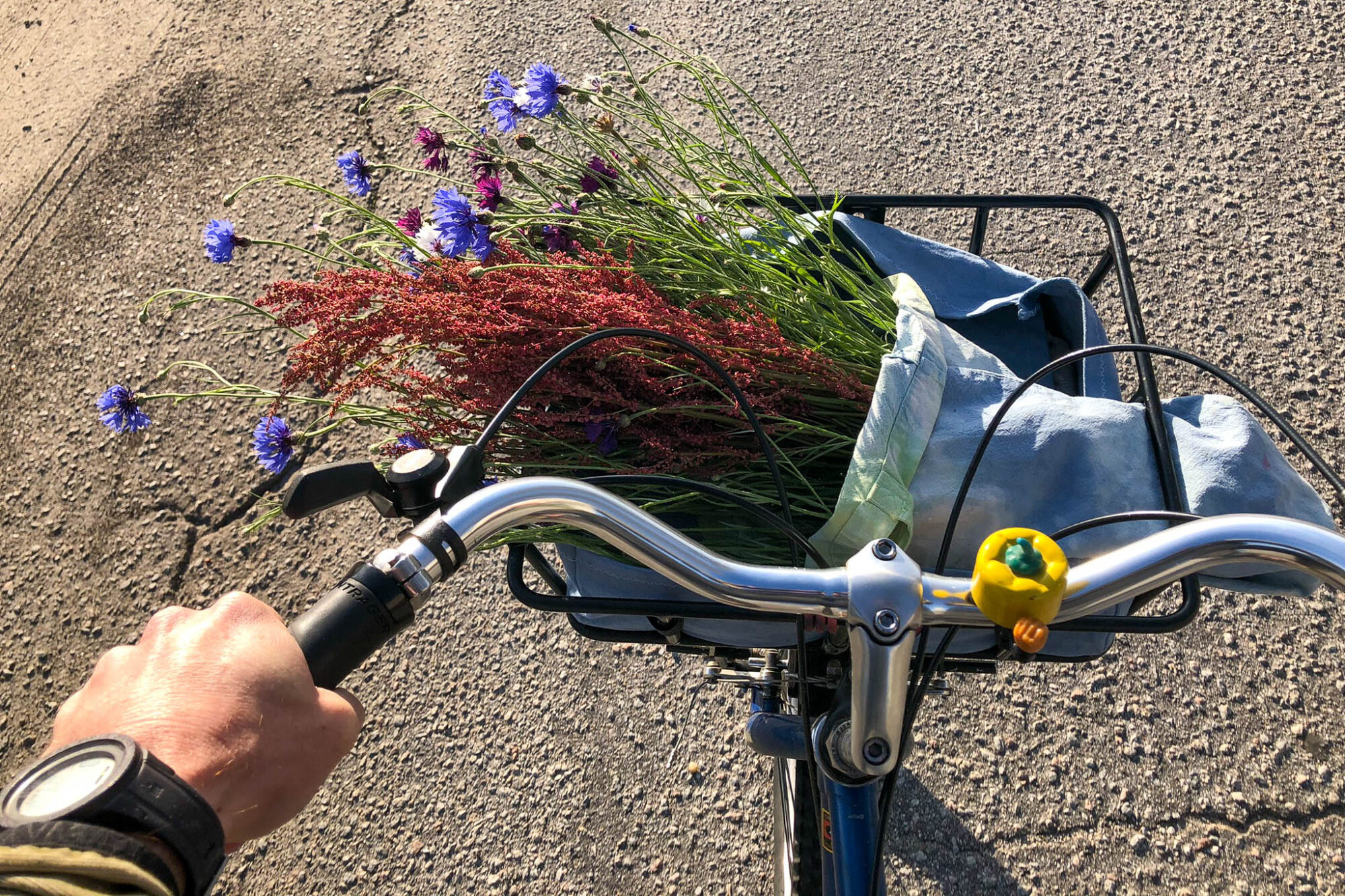
Take the old Peugeot Montreal Express in the photos. It is really my wife’s, but I still goof around on it and take it on grocery runs, despite its small size. I know I’m about to expand the definition of “bikepacking,” but we have packed a lot of things in the basket of that bike. Pumpkins and watermelons, boxes of diapers and beer, fresh strawberries and bouquets of flowers, baseball gloves and fishing rods.
Second, The Stand most certainly can bear some blame for my fleet of old bikes. I fell in love with bikes, in part, by working on them. I get great satisfaction from making a bike work again or reconfiguring it to be slightly different than it was. The Bianchi has worn many different components. Each time, I think it’s at its peak—this time, though, it is! The Karate Monkey started as a singlespeed steel hardtail, and it has since morphed into my dedicated bikepacking bike. It’s comfortable on all kinds of terrain (a real ATB, I’d say).
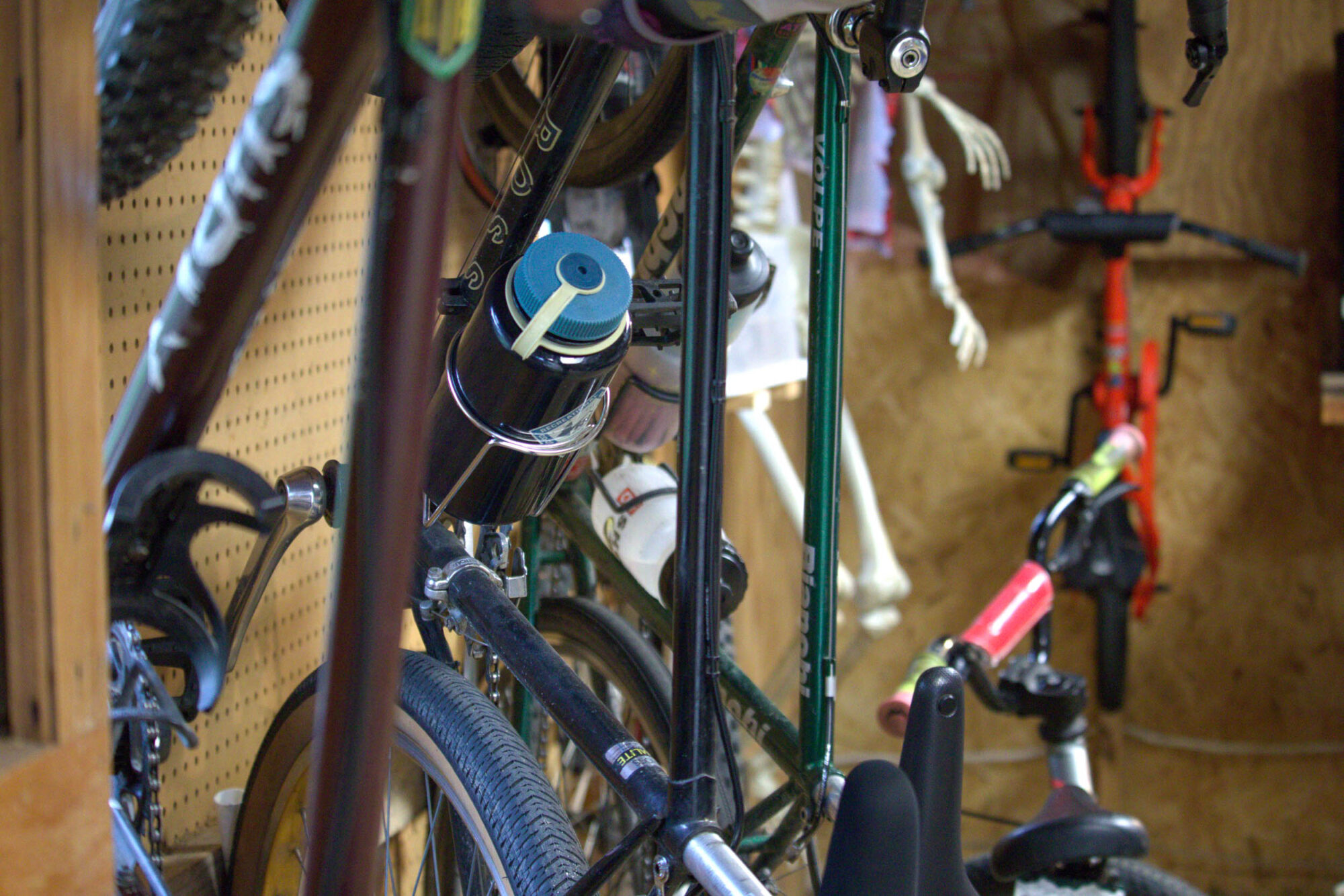
While the photos I took with this article show the 1983 Ross with the original parts, I’ve recently taken it completely apart and embarked down a foolhardy path of making it a singlespeed, using the same wheels (because of the gold), which required some less-than-ideal adjustments like moving spacers around on the axle and re-dishing the wheel. Will it be worth it? I don’t know, but it has been a fun project.
My old bikes are very open to this kind of thing. They don’t mind going through iterations or being experimented on. That’s because they know that if things don’t work out just right, it won’t cost their owner all that much money. Plus, they take pleasure in bringing me joy.
Finally, and this is the closest I’m going to get to a moral argument, old bikes help to keep me grounded. As you all know, things are moving “forward” real fast these days. In all aspects of my life, I’m constantly battling that low-level anxiety that comes from fending off the arrows of “progress.” Every day, a new existential threat looms just under the horizon to one side, and a transformational humanity-saving advancement beckons from the other. The bike industry is not immune. While the basics of a bicycle are steadfast and require little innovation to suit most of us, there are plenty of people trying constantly to convince us otherwise. When I get tired of that, I go into my shop and tinker with old bikes that still work.
Which brings me back, once more, to The Stand. If there is any gift that it keeps giving, it’s the respite it provides—the truth of a few basic materials and physics. Will bikes change the world? I doubt it; they’ve been around long enough, and despite some of our best efforts, only a handful of us fell in love. But they have changed my life, and I get to share that with others. The gift multiplies.
Further Reading
Make sure to dig into these related articles for more info...
Please keep the conversation civil, constructive, and inclusive, or your comment will be removed.


